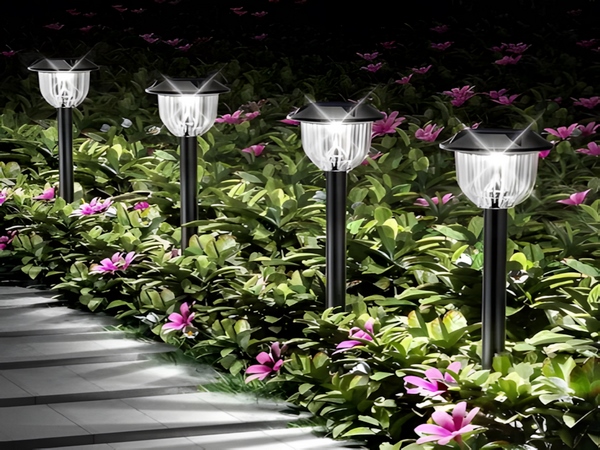
Solar courtyard lights are a type of outdoor lighting, typically referring to outdoor road lighting for heights below 6 meters. Due to their diversity, aesthetics, beautification, and decorative aspects, they are also known as garden landscape lights. So how do we choose solar courtyard lights? Let’s take a look together!
The main structure of solar courtyard lights consists of solar panels, batteries, and controllers. They use solar radiation as their energy source, charging the batteries through solar panels during the day, and at night, the controller discharges the batteries to the light source.

Since solar courtyard lights are installed outdoors, some are also installed indoors. Therefore, the structure is generally designed to be segmented. The segmented design means that the solar panel and the lamp head are separate. When selecting solar courtyard lights, we can use the following simple methods for judgment.
1. First, visually inspect the solar panel. The larger the solar panel, the higher the power and charging efficiency. However, monocrystalline solar panels are slightly more efficient than polycrystalline ones, though they are smaller in size for the same power. Professionals can also look at the label on the back of the solar panel, which typically indicates the power.

2. Check the connecting wire between the solar panel and the lamp body. The thicker the connecting wire, the smaller the voltage drop, but the corresponding cost is higher.
3. Evaluate the battery used and its capacity. Solar courtyard lights commonly use lithium iron phosphate batteries, which have a longer lifespan and are safer. Additionally, the larger the battery capacity, the more energy it can store, and the longer the light duration. However, the battery is typically installed inside the lamp body and is difficult to see. This can only be judged by weight; a larger battery capacity means a heavier lamp.
This concludes our discussion on how to choose solar courtyard lights. Solar courtyard lights are primarily used for slow lanes, narrow paths, residential areas, tourist attractions, and outdoor lighting in public places such as urban parks and squares. They can extend outdoor activity time and enhance property security.



